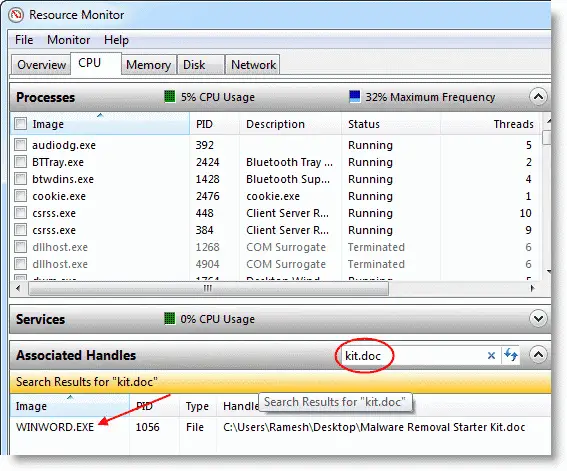

- #WIN7 PROCESS MONITOR HOW TO#
- #WIN7 PROCESS MONITOR 64 BIT#
- #WIN7 PROCESS MONITOR UPDATE#
- #WIN7 PROCESS MONITOR WINDOWS#
After a lot of searching, I found this blog post that describes the actual root cause and how to resolve it. So, PROCMON32.SYS was not being installed. The file could be corrupt due to unauthorized modification or the invalid hash could indicate a potential disk device errorįilename: \Device\HarddiskVolume2\Windows\System32/drivers/PROCMON23.SYS I checked Event Viewer->Security and saw that there was an Audit Error:Ĭode integrity determined that the image hash of a file is not valid.
#WIN7 PROCESS MONITOR 64 BIT#

Extract the 64 bit binary from the procmon.exe into it’s own binary procmon-64 (didn’t work).The Workstation service needs to be running (it is).There are several solutions noted as the root cause, not of which worked for me including: This has been mentioned in posts going back to 2008.
#WIN7 PROCESS MONITOR WINDOWS#
Process Explorer works on Windows 9x/Me, Windows NT 4.0, Windows 2000, Windows XP, Server 2003, and 64-bit versions of Windows for 圆4 and IA64 processors, and Windows Vista and Windows 7.Attempts to run the 64 bit version of procmon to observe a process’ activity results in the following error: Unable to load Process Monitor Device Driver. and can be downloaded from Microsoft's Sysinternals Technet site. Process Explorer is a stand alone application, requires no installation. Setting it to anything higher may prevent a process from being captured during quick spikes.
#WIN7 PROCESS MONITOR UPDATE#
To do this, click on View \ Update Speed and set it to either one or two second interval. Now that you know how to catch processes that causes high CPU usage, you will want to make sure that Process Explorer is configured properly for it's update speed. I'm not sure of the time length that is displayed, but it's a good way to visualize CPU utilization for all processes and pick out the culprits that's slowing down your system. TIP: If you don't see the CPU History column, you can add it by clicking on View \ Select Columns… then select the Process Image tab and check the box next to CPU History and click OK. In case you're wondering, the red spikes in the graph represent kernel times, while the green spikes are application related.Īnother nice feature of Process Explorer is the capability to sort process utilization by clicking on the CPU History column. The graph will display the last twelve minutes of activity.įrom here you can open Process Explorer by clicking on it's icon in the System tray, to identify information about the process and it's path location. When System Information opens, press the space bar to pause Process Explorer from updating, and mouse over the spike (or spikes) to identify the process. When CPU utilization returns to normal, and you are actually able to perform a task, right click on the icon (in System Tray) and select System Information. This is where Process Explorer really shines in it's capability to view recent past data history. While that's cool, it's a small window and sometimes when Windows really bogs down and becomes unresponsive, you may not be able to use the icon in the System Tray. You can even move the mouse around to view other spikes and identify the process. The next time a process causes a spike, just mouse over the icon in the System Tray and the pop-up will display the process name and percentage of utilization. To be able to capture past history, Process Explorer needs to be running, which isn't a problem since it can be minimized in the System Tray. Viewing the CPU graph in System Information mode, you can easily mouse over the spikes which will display the process name, it's PID (Process Identifier), the CPU usage (percent) and the exact time of the spike. By default Process Explorer displays updated activity every two seconds (which can be modified).


 0 kommentar(er)
0 kommentar(er)
